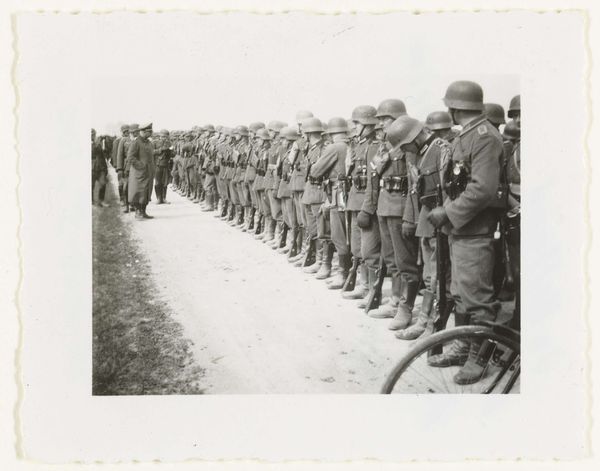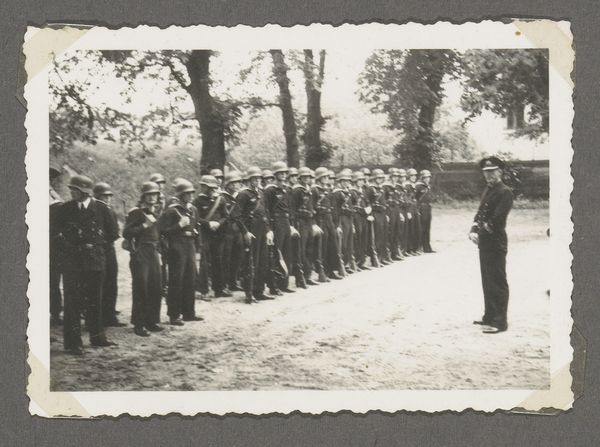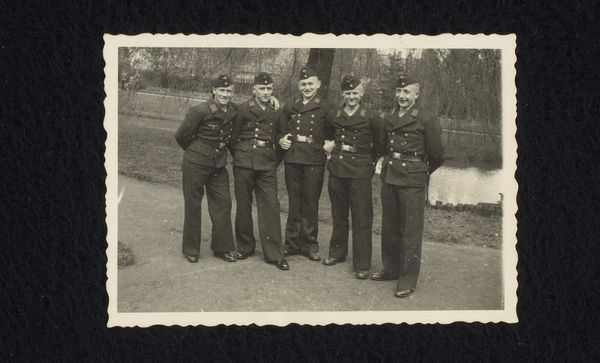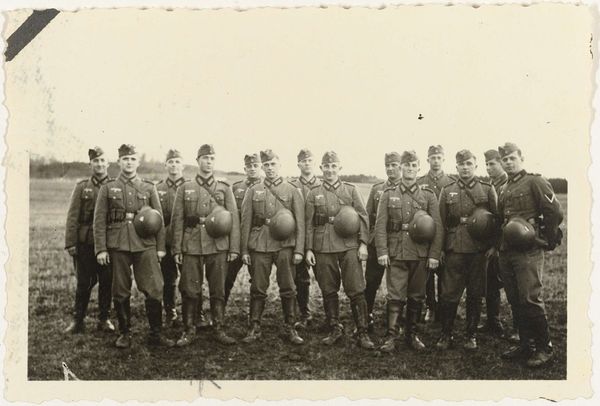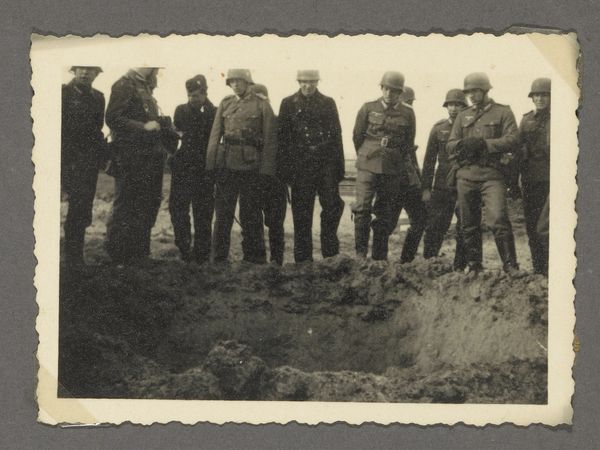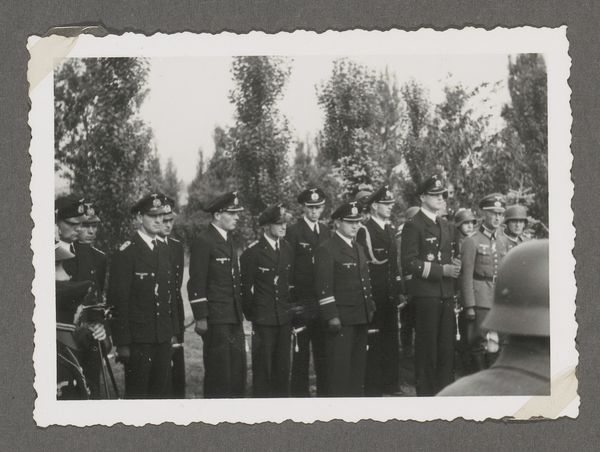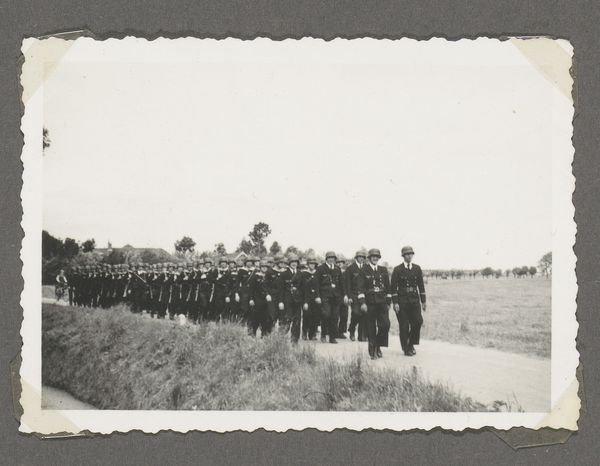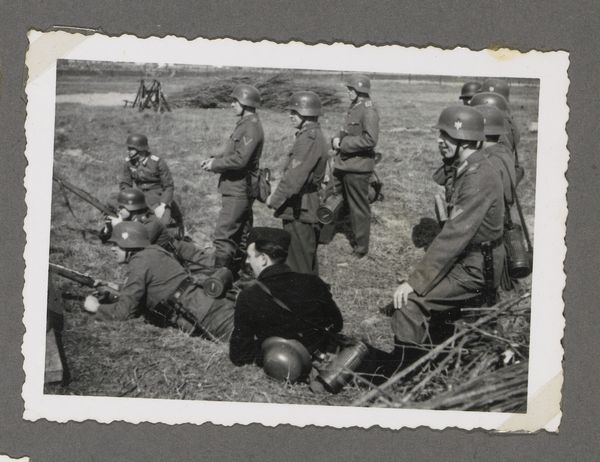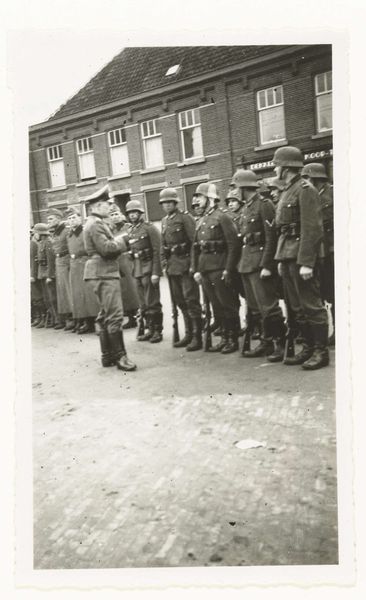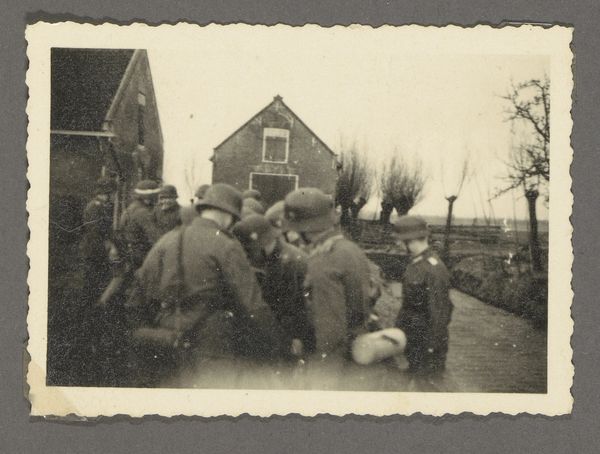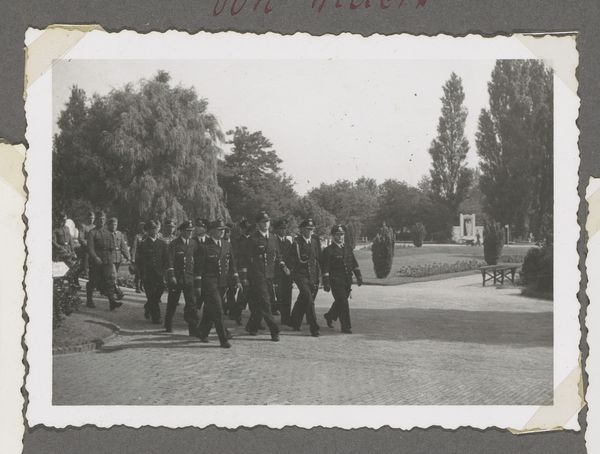
photography, gelatin-silver-print
#
photography
#
group-portraits
#
gelatin-silver-print
#
history-painting
#
realism
Dimensions: height 62 mm, width 87 mm
Copyright: Rijks Museum: Open Domain
Editor: This photograph, titled "Groep militairen in uniform," was taken sometime between 1941 and 1945. It’s a gelatin silver print and the artist is listed as anonymous. There is something profoundly unsettling about seeing a group of soldiers lined up like this, seemingly anonymous and ready for orders. How do you interpret this work in its historical context? Curator: It’s unsettling for good reason. We must understand this image as a product and reflection of its time. Looking at their uniforms and the date, it's highly likely these are German soldiers during World War II. Consider how photography during this era was used as propaganda, reinforcing a specific narrative of power and control. Who was this image intended for? What emotions did it aim to evoke? Editor: So you're saying that this image may not be a neutral documentation, but instead a tool for constructing a certain image of military strength? Curator: Precisely. And that image, in turn, upheld a very specific ideological structure built on nationalism, racial supremacy, and military dominance. The soldiers themselves become almost dehumanized, represented as a uniform mass embodying state power, their individuality suppressed for the collective goal of war. Editor: It's chilling to think about the layers of manipulation embedded in this seemingly simple photograph. Did photography of this kind have implications beyond just Germany? Curator: Absolutely. Images like this circulated widely and played a significant role in shaping global perceptions of the war, fueling anxieties, and contributing to the broader political climate. We can think about the ethical considerations of depicting soldiers in uniform even today. Editor: It's interesting how a photograph, ostensibly meant to depict reality, can be such a potent tool of ideological manipulation. It has implications far beyond the purely aesthetic. I definitely see this work in a new light now. Curator: Exactly. Questioning these power dynamics is crucial to understanding the work, not just as a historical artifact, but as a cautionary tale about image making.
Comments
No comments
Be the first to comment and join the conversation on the ultimate creative platform.
